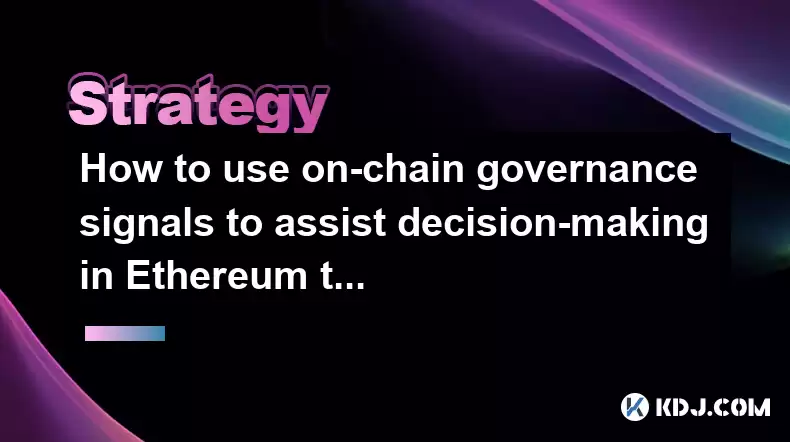-
 Bitcoin
Bitcoin $118400
1.64% -
 Ethereum
Ethereum $4210
-1.74% -
 XRP
XRP $3.175
-2.25% -
 Tether USDt
Tether USDt $1.000
0.00% -
 BNB
BNB $800.7
-0.18% -
 Solana
Solana $183.2
1.19% -
 USDC
USDC $0.9998
0.00% -
 Dogecoin
Dogecoin $0.2319
-4.30% -
 TRON
TRON $0.3388
1.11% -
 Cardano
Cardano $0.7951
-1.77% -
 Hyperliquid
Hyperliquid $44.76
1.61% -
 Chainlink
Chainlink $21.93
2.82% -
 Stellar
Stellar $0.4409
-1.92% -
 Sui
Sui $3.828
-2.37% -
 Bitcoin Cash
Bitcoin Cash $568.3
-0.57% -
 Hedera
Hedera $0.2561
-2.80% -
 Ethena USDe
Ethena USDe $1.001
-0.02% -
 Avalanche
Avalanche $23.63
-3.68% -
 Litecoin
Litecoin $124.0
1.80% -
 Toncoin
Toncoin $3.317
-2.74% -
 UNUS SED LEO
UNUS SED LEO $9.029
0.34% -
 Shiba Inu
Shiba Inu $0.00001349
-2.54% -
 Uniswap
Uniswap $10.85
-1.44% -
 Polkadot
Polkadot $4.025
-2.41% -
 Dai
Dai $1.000
0.01% -
 Cronos
Cronos $0.1619
2.41% -
 Ethena
Ethena $0.7756
4.12% -
 Bitget Token
Bitget Token $4.437
-1.70% -
 Pepe
Pepe $0.00001194
-3.82% -
 Monero
Monero $267.3
-2.17%
How to use on-chain governance signals to assist decision-making in Ethereum transactions?
Key Sentence: On-chain governance signals empower Ethereum community members to collaboratively shape project decisions through voting, proposal evaluation, and ongoing discussion.
Feb 25, 2025 at 07:06 am

Key Points
- On-chain governance signals allow individuals to participate and influence the decision-making process of Ethereum-related projects and protocols.
- These signals help users make more informed decisions, especially when performing complex transactions involving Ethereum or dealing with advanced protocols like decentralized exchanges.
- Monitoring on-chain governance signals can provide insights into the health and activity of various protocols, empowering users to make calculated decisions based on real-time data.
Delving into On-Chain Governance Signals: A Step-by-Step Approach
1. Understanding the Concept of On-Chain Governance
- On-chain governance signifies the use of blockchain to facilitate decentralized decision-making within crypto projects and protocols.
- Instead of relying on centralized entities, on-chain governance empowers token holders, also known as stakeholders, to actively participate in shaping project decisions and protocol upgrades.
- This approach enhances transparency, community engagement, and decision-making efficiency, allowing participants to directly influence project outcomes.
2. Identifying Relevant On-Chain Governance Signals
- Voting Power: Indicates the voting weight assigned to individual stakeholders based on their holdings of the project's token.
- Proposal Score: Measures the level of support for a governance proposal, reflecting the accumulated votes in favor or against the proposition.
- Participation Rate: Represents the percentage of stakeholders involved in the voting process, signifying the level of community engagement and consensus behind decisions.
- Discussion Activity: Assesses the level of engagement within governance forums or platforms, providing insights into community interest and the depth of discussions surrounding proposals.
3. Interpreting and Applying Governance Signals
- High Proposal Scores: Positive proposal scores indicate strong community support for a particular upgrade or change, increasing the likelihood of its successful implementation.
- Low Participation Rates: Low participation can signal a lack of community interest or agreement on governance proposals, potentially leading to delayed or reworked decisions.
- Active Discussion: High levels of discussion activity indicate community engagement and a diversity of opinions, enabling comprehensive analysis before making decisions.
- Sudden Volatility in Voting Power: Significant fluctuations suggest influxes or outflows of stakeholders, potentially influencing voting outcomes and warranting attention.
4. Combining Signals for Comprehensive Insights
- Analyzing multiple signals collectively provides a holistic view, enabling users to make well-rounded decisions.
- For instance, a high proposal score combined with low participation may indicate a lack of broad consensus, prompting further discussion or re-evaluation.
- Conversely, high participation with a low proposal score suggests a need for deeper analysis into community concerns and potential counterarguments.
5. Incorporating Signals into Decision-Making
- When performing complex Ethereum transactions, consider the overall health and activity of the target protocol based on its governance signals.
- For example, a protocol with high governance activity, positive proposal scores, and an engaged community is likely to be more stable and reliable for transactions.
- Conversely, protocols with low governance engagement or negative proposal scores may pose higher risks, warranting additional caution and research.
FAQs
1. What are the limitations of on-chain governance signals?
- Signals are based on past and current data, so abrupt changes in sentiment or market conditions may not be immediately reflected.
- Metrics like voting power can be influenced by token distribution dynamics, requiring consideration of the distribution model.
2. How often should on-chain governance signals be monitored?
- Frequency varies depending on the user's decision window and the pace of protocol changes. Frequent monitoring is recommended during periods of substantial protocol upgrades or community discussion.
3. Are on-chain governance signals only relevant for highly active protocols?
- While larger, active protocols generate more signals, smaller protocols also offer valuable insights. Observing signals can help users gauge protocol maturity and community involvement, regardless of usage volume.
4. What other factors should be considered alongside on-chain governance signals?
- Roadmaps, team updates, code reviews, and the project's broader ecosystem also provide valuable context when making Ethereum transaction decisions.
Disclaimer:info@kdj.com
The information provided is not trading advice. kdj.com does not assume any responsibility for any investments made based on the information provided in this article. Cryptocurrencies are highly volatile and it is highly recommended that you invest with caution after thorough research!
If you believe that the content used on this website infringes your copyright, please contact us immediately (info@kdj.com) and we will delete it promptly.
- LYNO AI & XRP: Decoding the ROI Potential in a Shifting Crypto Landscape
- 2025-08-11 04:30:11
- Cryptos on the Cusp: Cold Wallet, Price Breakouts, and What's Hot Now
- 2025-08-11 04:50:11
- Dogecoin, Meme Coins, and Remittix Utility: What's the Hype?
- 2025-08-11 04:50:11
- Sky Bet, ESPN, and the Spartans Bonus: A Betting Landscape Overview
- 2025-08-11 05:11:16
- Altcoin Buyouts & Market Removals: Crypto Development's Wild Ride
- 2025-08-11 04:30:11
- Bitcoin Banks Arrive: El Salvador's Bold Play with Investment Banks and Crypto
- 2025-08-11 04:55:12
Related knowledge

How to use stop-loss orders to limit potential losses?
Aug 08,2025 at 02:01pm
Understanding Stop-Loss Orders in Cryptocurrency TradingA stop-loss order is a risk management tool used by traders to automatically sell a cryptocurr...

What are the most promising altcoins to invest in?
Aug 10,2025 at 11:42am
Understanding the Role of Private Keys in Cryptocurrency WalletsIn the world of cryptocurrency, private keys are the cornerstone of ownership and cont...

How to read cryptocurrency charts and use technical analysis?
Aug 08,2025 at 11:08am
Understanding the Basics of Cryptocurrency ChartsCryptocurrency charts are graphical representations of price movements over time. These charts are es...

What is the difference between long-term holding (HODLing) and short-term trading?
Aug 10,2025 at 05:30pm
Understanding HODLing in the Cryptocurrency SpaceThe term HODL originated from a typo in a 2013 Bitcoin forum post and has since become a widely accep...

How to do your own research (DYOR) before investing in a crypto project?
Aug 08,2025 at 09:07pm
Understanding the Core Principles of DYOR in CryptocurrencyEngaging in due diligence before investing in any cryptocurrency project is essential to mi...

How to build a diversified crypto portfolio?
Aug 09,2025 at 12:21pm
Understanding the Importance of Diversification in CryptoDiversification in the cryptocurrency space is a strategy used to reduce risk by spreading in...

How to use stop-loss orders to limit potential losses?
Aug 08,2025 at 02:01pm
Understanding Stop-Loss Orders in Cryptocurrency TradingA stop-loss order is a risk management tool used by traders to automatically sell a cryptocurr...

What are the most promising altcoins to invest in?
Aug 10,2025 at 11:42am
Understanding the Role of Private Keys in Cryptocurrency WalletsIn the world of cryptocurrency, private keys are the cornerstone of ownership and cont...

How to read cryptocurrency charts and use technical analysis?
Aug 08,2025 at 11:08am
Understanding the Basics of Cryptocurrency ChartsCryptocurrency charts are graphical representations of price movements over time. These charts are es...

What is the difference between long-term holding (HODLing) and short-term trading?
Aug 10,2025 at 05:30pm
Understanding HODLing in the Cryptocurrency SpaceThe term HODL originated from a typo in a 2013 Bitcoin forum post and has since become a widely accep...

How to do your own research (DYOR) before investing in a crypto project?
Aug 08,2025 at 09:07pm
Understanding the Core Principles of DYOR in CryptocurrencyEngaging in due diligence before investing in any cryptocurrency project is essential to mi...

How to build a diversified crypto portfolio?
Aug 09,2025 at 12:21pm
Understanding the Importance of Diversification in CryptoDiversification in the cryptocurrency space is a strategy used to reduce risk by spreading in...
See all articles

























































































